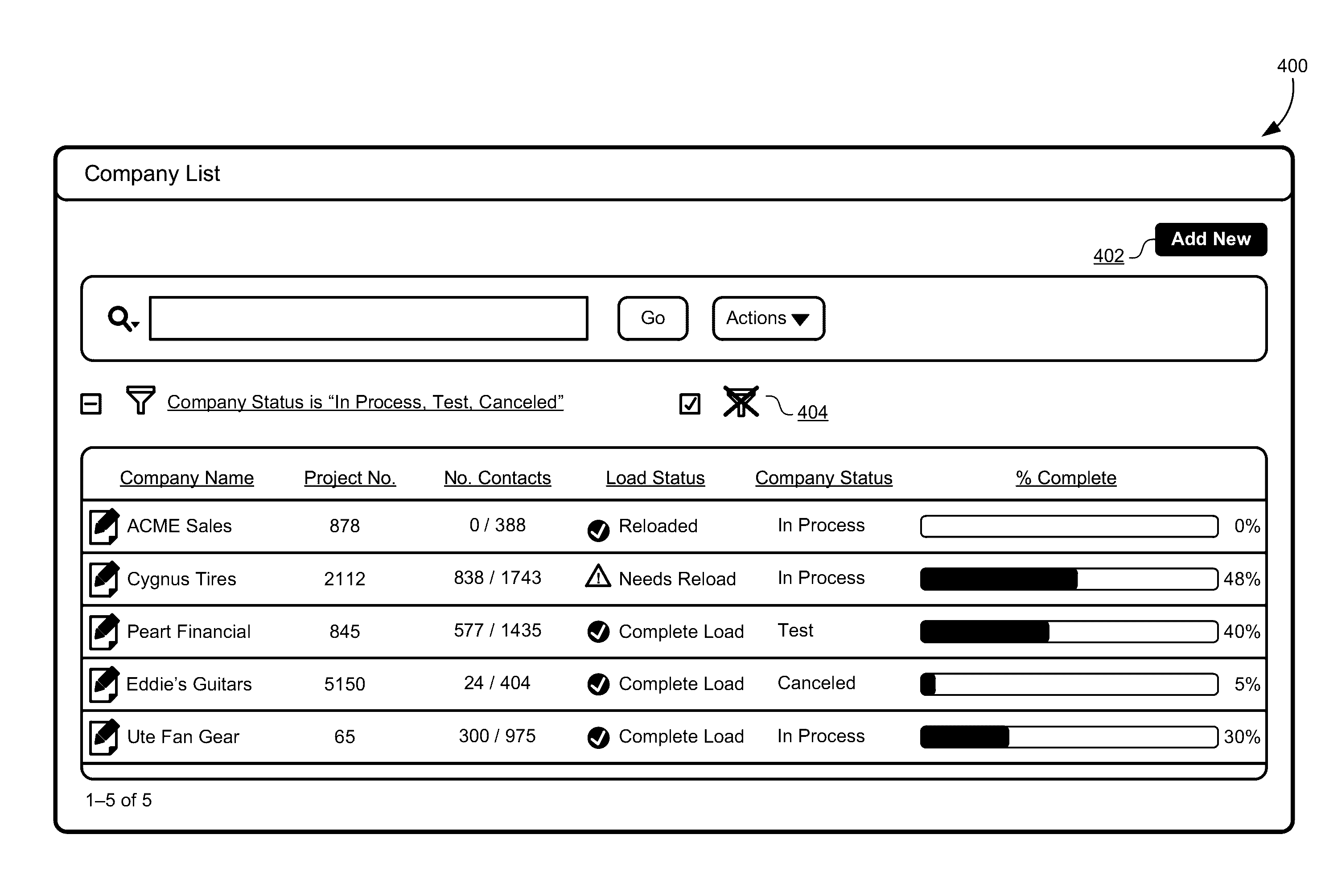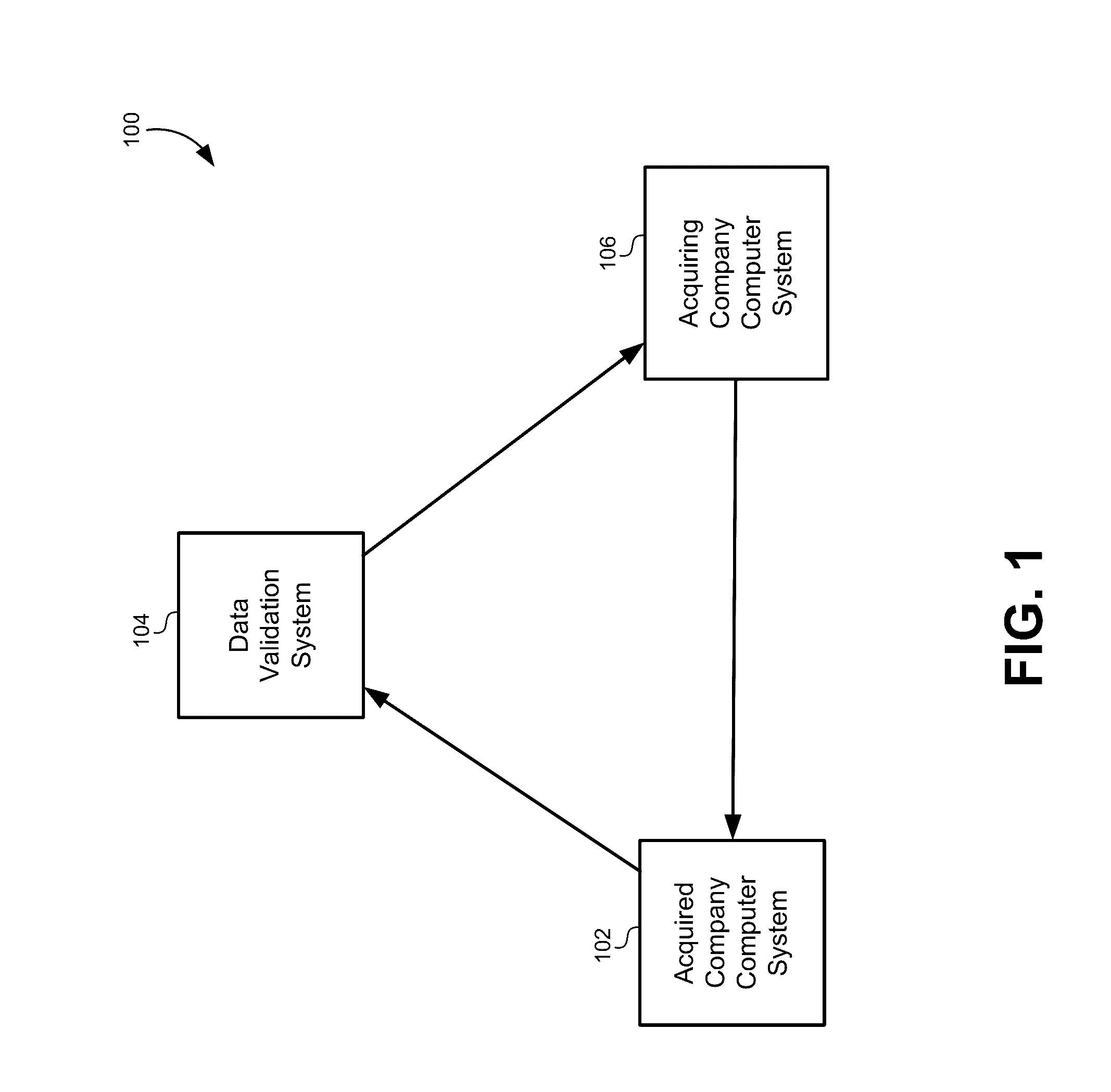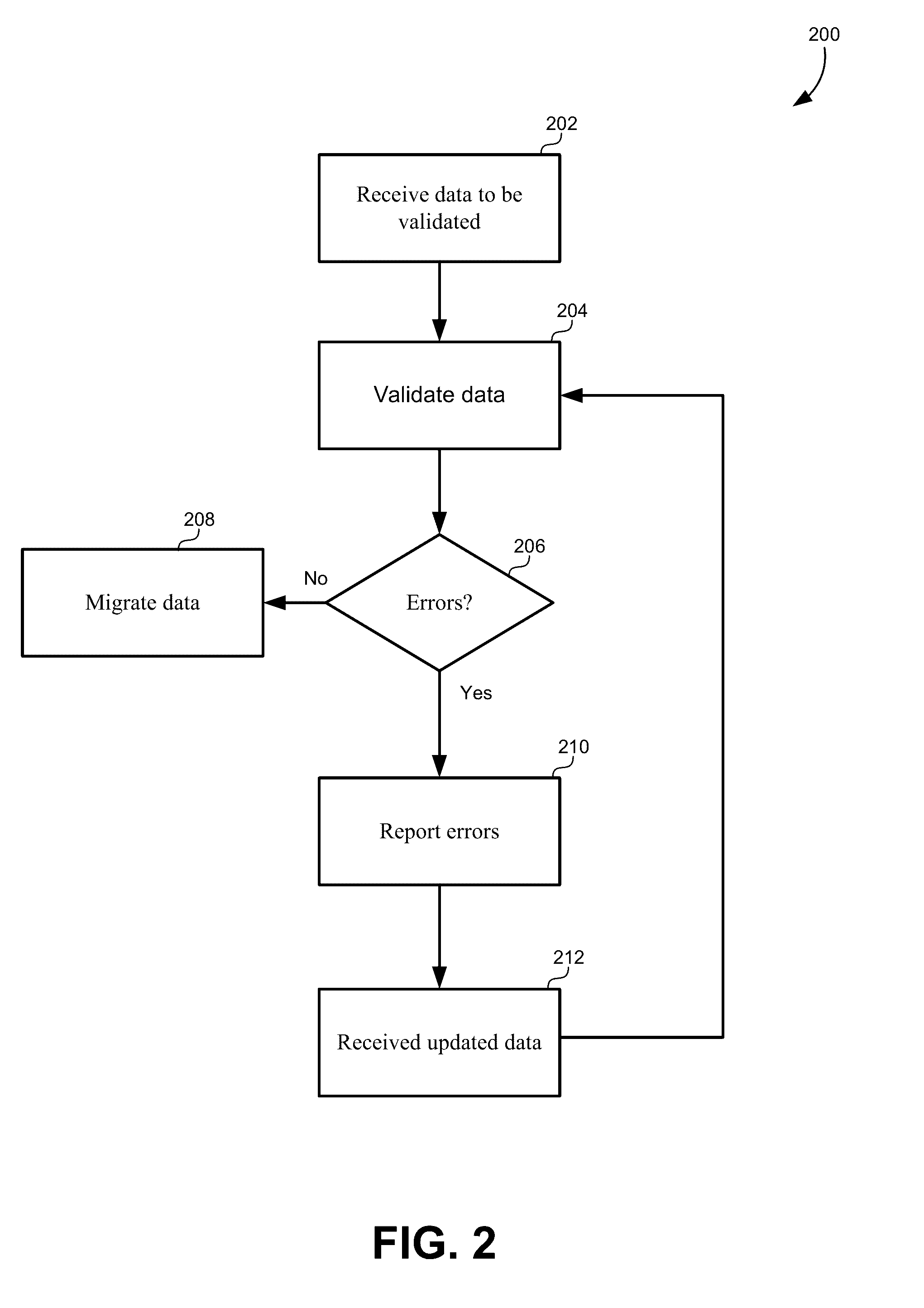Validating coherency between multiple data sets between database transfers
a technology of coherence and database transfer, applied in the field of mergers and acquisitions, can solve problems such as the difference between the platform of the company being acquired and the platform of the acquiring company
- Summary
- Abstract
- Description
- Claims
- Application Information
AI Technical Summary
Benefits of technology
Problems solved by technology
Method used
Image
Examples
Embodiment Construction
[0028]The migration of data into a transactional system such as Oracle E-Business Suite requires that the source data, whether extracted from one or more source systems or manually entered into spreadsheets, is complete and correct. Multiple entities may reference each other, and each entity must have all required fields populated according to the validation rules the destination system enforces. Additionally, any mappings or references to existing destination system data must also be validated as must any validations required to ensure that the data conforms to the business processes within the company. Failure to correctly reference associated entities or to correctly populate a field will result in the system application program interfaces or Open Interface tables rejecting the record for loading.
[0029]Typically in a large migration project, such as those taking place as part of a merger and acquisition, there is a long lead time in the validation process due to the number of ite...
PUM
 Login to View More
Login to View More Abstract
Description
Claims
Application Information
 Login to View More
Login to View More - R&D
- Intellectual Property
- Life Sciences
- Materials
- Tech Scout
- Unparalleled Data Quality
- Higher Quality Content
- 60% Fewer Hallucinations
Browse by: Latest US Patents, China's latest patents, Technical Efficacy Thesaurus, Application Domain, Technology Topic, Popular Technical Reports.
© 2025 PatSnap. All rights reserved.Legal|Privacy policy|Modern Slavery Act Transparency Statement|Sitemap|About US| Contact US: help@patsnap.com



